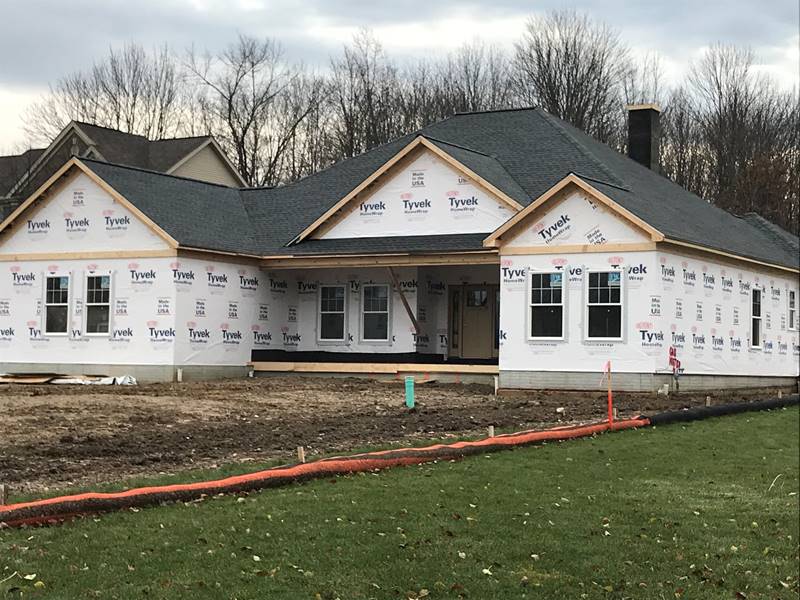Economy

Afraid of Heights? Lofty Steel Prices Make for Risky Business
Written by Tim Triplett
March 18, 2018
When steel prices rise, so does the credit and inventory risk for mills and service centers. When steel prices rise by 40 percent, as they have in the past year, the risk puts smaller players at a big disadvantage.
Service centers have been cozying up to their bankers to get extended lines of credit, some so they can take full advantage of the opportunity in the steel market, others in the hope they can maintain even the same level of inventory and sales. “People are running out of their bank line, they are running out of credit insurance, they are up against their limit,” said Lisa Goldenberg, president of Delaware Steel of Pennsylvania.
Obviously, when steel costs 40 percent more, it takes 40 percent more credit, or cash, to purchase the same amount of material. That favors the larger players with more financial wherewithal, especially if supplies are tight and the mills must put customers on allocation, Goldenberg noted. “With allocation, it will be the haves and have nots. Mills will favor customers who pose the least credit risk in deciding who gets steel. If you have the room on your credit line, you have a huge advantage over other competitors.”
Likewise, the banks move the most creditworthy to the front of the line. “If you are going to the bank at the same time a lot of others are going to the bank, you might not get that line of credit right away. And if your financials are a little iffy, you might not get it at all,” one source told Steel Market Update.
Some companies will have to lower their inventories because they don’t have sufficient working capital. Lower inventory means lower sales at a time when high steel prices mean better margins.
For service centers, it’s not just a question of how much credit they can get to purchase more expensive steel. “What about our customers? Are they going to be able to get the increased capital they need? That’s a big question mark,” said one executive.
It’s tempting for a mill or service center to raise the credit limit or ease the terms to maintain the sales volume with a given customer, but those sales sometimes come with a cost. Customers struggling with insufficient capital are often slow to pay. As a result, more suppliers are considering credit insurance to protect themselves from customers who get in over their heads. Credit insurance protects sellers from losses when customers fail to pay their trade debt. The insurance company analyzes the creditworthiness and financial stability of each customer and assigns them a specific credit limit. Credit insurance protects a business from a catastrophic loss due to a customer default. A service center can always extend additional credit to a customer, but at its own peril.
Bill Vitucci, CFO of Vitco Steel Supply in Chicago, believes in credit insurance. “It helps us sleep better at night. We hope we never have to use it,” he said. At Vitco, like most other service centers, there a continual tug-of-war between the sales department that always wants to take an order and the insurance provider that always wants to limit the company’s exposure. “It’s a question of how high we go and how much we push,” Vitucci said. “We are seeing DSOs (days sales outstanding) expand, which always happens when prices get higher. So, we try to get ahead of the curve as opposed to chasing it down the road.”
A market with fast-rising steel prices calls for more careful management, Vitucci said. He is traveling more with his salespeople to visit with customers to make sure their business is secure. “It’s time to get back to business basics, get to know your customers better,” he said. “When you are funding someone for an extended term of 45 days and their receivables stretch out to 60 or 90 days, it is too late to go back to that sale. Thirty to 60 days from now is when we will see the results of the decisions we make today. If you don’t know the people you are doing business with very well, you are just making uninformed decisions.”
The healthy economy is supporting a strong lending environment. “The banks are actually working with us better than they did the last time pricing went up,” Vitucci said. But that may not be enough for some competitors, who are still recovering from the market crash in 2008-09 and remain highly leveraged. “Even almost 10 years later they have not been able to get out from under, and they are not prepared for this price spike.”
By Tim Triplett, Tim@SteelMarketUpdate.com

Tim Triplett
Read more from Tim TriplettLatest in Economy

Fed Beige Book: Economy improves, but manufacturing weak
While general economic conditions across the US improved slightly over the last six weeks, activity in the manufacturing sector was weak, according to the Fed’s latest Beige Book report.

SMU Community Chat: Simonson with the latest on construction
A lot of economists were predicting a recession last year. Ken Simonson, chief economist for The Associated General Contractors of America (AGC), wasn’t one of them.

Housing starts slip to seven-month low in March
Following a strong February, US housing starts eased through March to a seven-month low, according to the most recent data from the US Census Bureau.

Manufacturing activity in New York state continues to soften
New York state saw a continued decline in manufacturing activity in April, according to the latest Empire State Manufacturing Survey from the Federal Reserve Bank of New York

Worldsteel projects steel demand to grow 1.7% this year
Global steel demand will reach roughly 1.793 million metric tons (1.976 million short tons) this year, an increase of 1.7% over 2023, the World Steel Association (worldsteel) said in its updated Short Range Outlook report. The gain will come after a 0.5% contraction in steel demand in 2023. Demand is forecasted to increase another 1.2% […]
